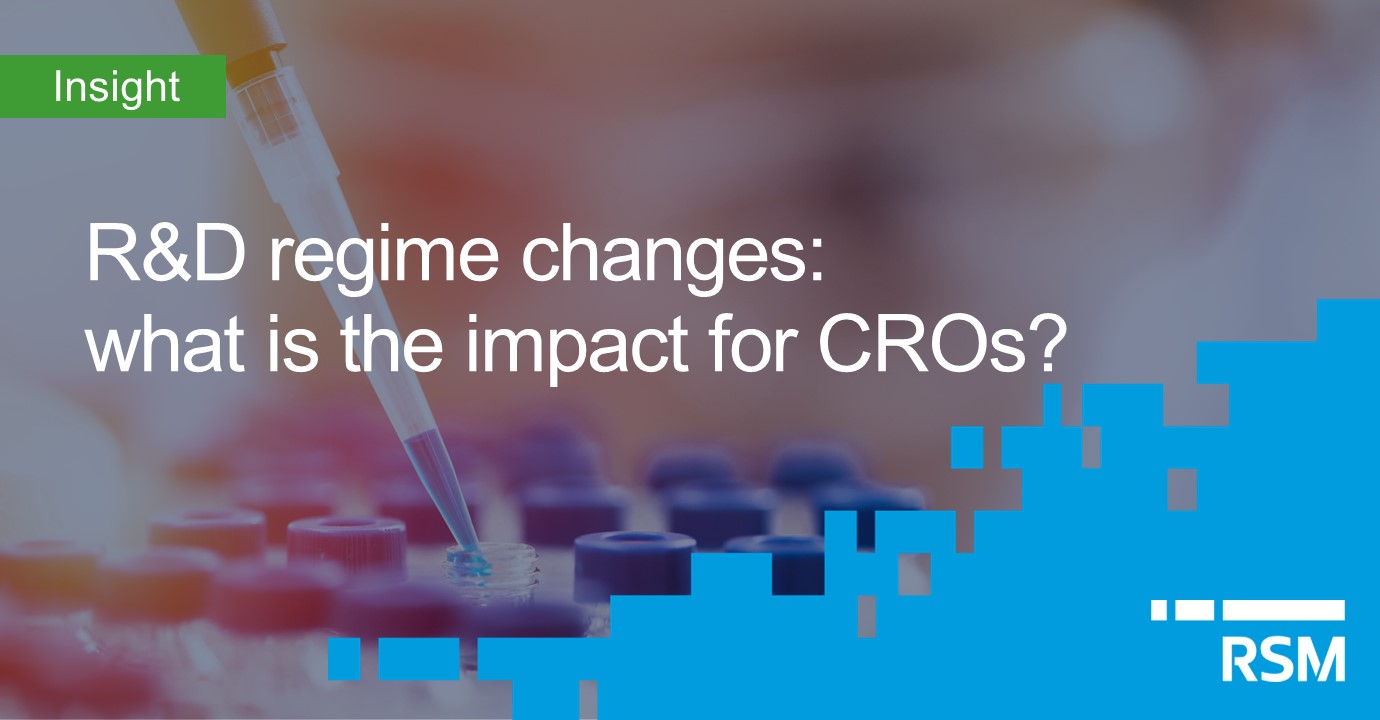Upcoming R&D regime changes – what is the impact for Clinical Research Organisations?

New R&D rules around contracted-out R&D are set to impact Clinical Research Organisations (CROs). Lizzie Gosling, innovations reliefs specialist for the life sciences and healthcare sector, looks at the key R&D regime changes and why CROs’ contracts need to be put under the spotlight.
What are the key changes?
The merger of the RDEC (‘R&D Expenditure Credit’) and SME (‘Small and Medium Enterprise’) R&D regimes comes into effect for periods starting on or after 1 April 2024. The goal of this merger is to offer a more streamlined and simplified R&D claims process. This change incorporates the visibility and much of the mechanics of the ‘above the line’ RDEC regime, whilst also integrating some favourable elements from the SME regime.
However, a detailed examination of these planned changes reveals some complexities. There could be significant drawbacks for many companies, such as CROs, whose business involves servicing contracts for third parties.
Whilst many changes to the regimes are either already in effect or soon to be implemented, one of the most significant for the life sciences sector is the new rules concerning contracted-out R&D, which warrant closer scrutiny.
Why your contracts need to be put under the spotlight
Historically, in making R&D claims, CROs had to first check whether the R&D activity was contracted out by large companies, overseas entities, or SMEs (which affected their ability to claim R&D relief).
New legislation and supporting guidance defining contracted-out R&D may now put further limits on R&D claims made by CROs. The draft guidance suggests that it will be the CROs’ customers (ie those developing the drugs/therapies that the CRO may be testing/supporting in their development) who will be able to claim the R&D relief. This hinges on the assumption that the customers intended or anticipated that R&D would be undertaken to fulfil the contract obligations between them and the CRO.
The most recent guidance produced by HMRC provides many examples of scenarios where the subcontract-contractor relationship is discussed. In these examples, the indicators suggest that, generally, it is the entity that is the active and knowing ‘commissioner’ of the R&D who may make the claim. However, there is potential subjectivity in this assessment, which may lead to ambiguity, confusion, and the possibility for dual claims by both sides of the contract.
Although the publication of the worked examples and draft guidance is helpful for understanding the emphasis of the new legislation, it is up to the claimant companies to carefully assess, document, and articulate their contractual relationships when making claims.
In the meantime, a review of the contracts being entered into with customers and subcontractors alike will be essential for preparing your R&D claims. We also recommend seeking professional advice in this area given the complexity of the subject matter.
If you’d like to discuss the R&D regime changes and their impact on your life sciences business or CRO, please contact Lizzie Gosling.
Lizzie Gosling
Tax Director
RSM UK Tax
T: +44 20 3201 8000 | W: www.rsmuk.com | Lizzie.Gosling@rsmuk.com





















